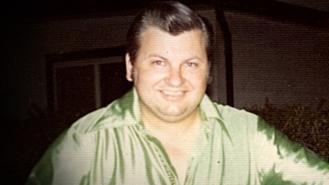
Did John Wayne Gacy kill alone?
To date, five of John Wayne Gacy’s 33 victims have never been identified outside of five simple descriptions about their estimated ages and their time of death. All but one of the victims were located in the now-infamous crawl space under Gacy’s home, along with 22 other young men and boys.
How can five young men and boys, disappear and die without a single person noticing? According to the National Missing and Unidentified Persons System, over 90,000 people are missing in the USA at any given time. While a good percentage of these people are found, about 2,700 people remain missing, every year. But there is a darker statistic which makes for an even more alarming read.
The National Institute of Justice claims that every year in the USA, 4,400 unidentified bodies or body parts, are recovered. Over time these remains may be identified with consistently improving technology - such as three of Gacy’s formerly anonymous victims - but hundreds are not. In 2021, 892 bodies remain unidentified, the majority being male.
While these figures demonstrate that disappearing or turning up dead for no specific reason is not as uncommon as one would expect, it does not explain how John Wayne Gacy, a convicted paederast who served 18 months of a 10-year sentence for the sexual assault of a 15-year-old boy in 1968, got away with killing 33 people after his release. More alarming is that he was often under surveillance in this period due to frequent brushes with the authorities. Why wasn’t he stopped sooner? A portion of the answer may lie in how Gacy was perceived by those around him.
By the time he began his killing spree in 1972, Gacy was running a successful construction business in Chicago. He was a family man and very much involved in local politics. Despite his second marriage collapsing in 1976, the killer had been honoured for his services to his community and was especially feted as a children’s clown where he performed publicly, including children’s hospitals. Gacy was even the director of Chicago's annual Polish Constitution Day Parade where, through his work, he was given security clearance to meet First Lady Rosalynn Carter, just seven months before being arrested for mass murder.
Gacy had charisma, he was avuncular, humorous and intelligent. Factor in his political and legal connections and it is possible to see how he was able to commit such horrific crimes in such a brazen manner. But Gacy, himself a former runaway, understood the world from which he chose his young, vulnerable victims. He would offer them work and befriend them before luring them to his house. Here he incapacitated them with alcohol and mercilessly humiliated, tortured and violated them for hours before he killed them.
We know this from human remains and from testimonies of potential murder victims, such as Jeffrey Rignall and Robert Donnelly, who managed to escape and inform the police. Not that the police acted on the information, arguably because the two men in question were gay. Then, of course, there are the inevitable suggestions of a cover-up.
It is always tricky to discuss alternative theories because most of the time they are based on conjecture without evidence. Factor in that Gacy was a serial liar who changed his stories on a whim which does not necessarily fortify, or dispute, the theory that he was involved in a much wider ring of abuse. It is not without possibility Gacy had help from two, young, employees, David Cram and Michael Rossi, who helped dig trenches under Gacy’s home, but it is Gacy’s connection to another former employee, Phillip Paske, that is a little more worrying.
Gacy at one time or another named all three as co-conspirators, but only Paske was involved with the business run by John David Norman, head of an international child sex-trafficking ring. In 1973, Norman’s office was raided, though he was never charged for this offence after as many as 100,000 index cards - with the names and peccadillos of clients who paid for sex with underage boys - vanished.
Gacy also claimed that Norman was responsible for the murder of some of the boys he was accused of killing, adding that police should examine Norman’s extensive library of child pornographic movies to see if they recognised any of the victims.
On 12th March 1980, Gacy was found guilty of the murder of 33 young men. He was executed 14 years later on 9th May 1994, by lethal injection.
The conversations with Gacy have ceased. What remains is speculation. Was Gacy acting alone, or did he have accomplices? That we may never know.
As for more victims, Detective Rafael Tovar is on record recalling a conversation he had with Gacy when transferring the killer from the police lockup to the county lockup. Tovar asked: ‘John, there are a lot of numbers going around. How many people did you kill?’ Gacy replied: ‘Well, I’ve said this, I’ve said that, but 45 sounds like a good number.’
Tovar asked him: ‘Well, where are they?’ Gacy said: ‘No. That’s your job to find out.’







